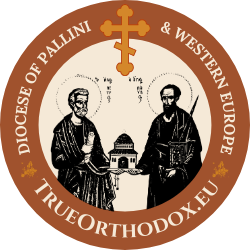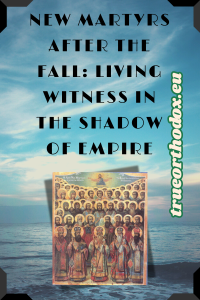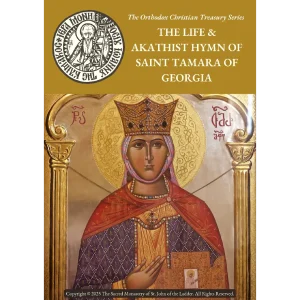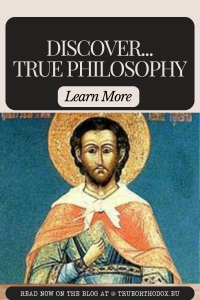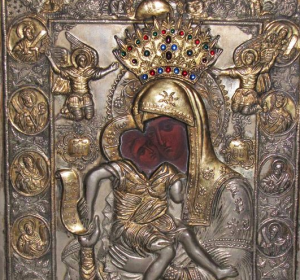New Monastic Martyr Abbess Margaret of Menzelinsk
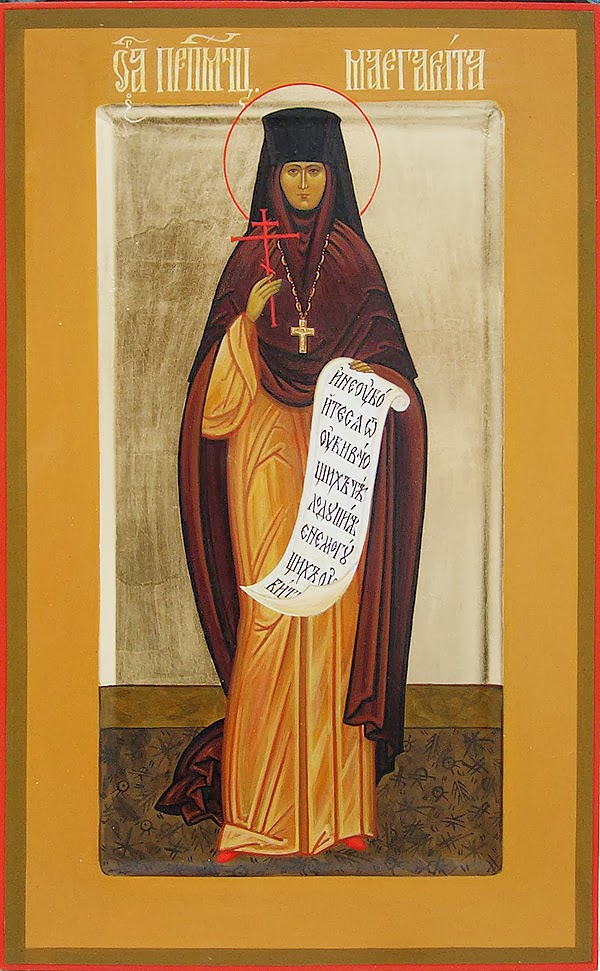
by Dr. Vladimir Moss
Abbess Margaret, in the world Maria Mikhailovna Gunarodnoulo, was born in 1865 or 1866 in a family of Greek origin. Before becoming a nun she lived in Kiev. Her spiritual father was Protopriest Alexander Korsakovsky, the rector of the St. George church, in whose parish she lived. In his memoirs Prince N.D. Zhevakov, who knew matushka long before she became a nun, writes: “I saw in Maria Mikhailovna the incarnation of fiery faith and ardent love for God. Small, frail, almost an old woman, she burned like a candle before God: everyone who knew her knew that she had been born precisely in order to warm others with her love.” Shortly after receiving the monastic tonsure with the name Margaret, she went to live in the “Joy and Consolation” community of the Orlov-Davydovs near Moscow, where the abbess was the very elderly Countess Orlova-Davydova. This period in her life was a heavy trial that demanded great courage, patience and humility.
On January 18, 1917 the Holy Synod appointed her superior of the Menzelinsk women’s monastery of the Prophet Elijah in Ufa province with elevation to the rank of abbess. This appointment took place thanks to the efforts of Prince N.D. Zhevakov, the assistant over-procurator of the Holy Synod. And her ordination as abbess took place in the presence of Great Princess Elizabeth Fyodorovna, who was exceptionally fond of Matushka Margaret.
The move to Menzelinsk was long and difficult. At the end of 1917 she arrived in the monastery, which was one of the biggest women’s communities in the Ufa diocese. It had three churches, a church-parish school, a monastic economy with fruit trees, kitchen-gardens and apiaries. The nuns worked in the guest-house for pilgrims, in workshops devoted to iconography, gold-weaving, carpentry, dress-making and book-binding, and also baking bread and prosphoras and preparing food. The monastery even had its own photographic studio – an extreme rarity at that time. In 1917 there were fifty nuns and 248 novices. The intelligent and educated abbess was renowned for her strict ascetic life and the good order she introduced into the monastery in the old Russian spirit.
In April, 1917 the revolutionary wave also hit the Prophet Elijah monastery. By decree of the Provisional Government, the church-parish schools had to be transferred into the administration of the Ministry of popular enlightenment, but the abbess tried to defend the monastery’s school from this transfer on the grounds that the property and buildings of the school belonged to the monastery and that the pupils were its novices. She declared that the upkeep of the school would from now on be the responsibility of the monastery (under the Tsars the State had paid the teachers). The unshakeable will of the abbess to keep the school’s education in the Orthodox faith had an unexpected result: the city left the school in her hands. Moreover, since city girls were studying in it, the city decided to pay the teachers and provide the necessary equipment.
On April 18, 1918 Abbess Margaret was elected a member of the diocesan council.
In May, 1918 the Czech legion rebelled, and by July the whole province had been liberated from the Bolsheviks. However, battles still continued on the western boundaries of the province, and Menzelinsk changed hands between the combatants several times. In the late summer the Whites abandoned Kazan; and according to Nun Alevtina, a previous inhabitant of the monastery, Abbess Margaret at one time decided to leave with the Whites and not remain under the authority of the Bolsheviks. She was at the wharf preparing to leave when St. Nicholas appeared to her and said:
“Why are you running from your crown?”
Stunned by the vision, Abbess Margaret returned to the monastery and told the monastery priest about what had happened. And sensing that she would soon have to suffer for the faith, she asked for her coffin to be prepared in advance, and that she should be buried on the very day of her death, after the burial service.
During the night of August 11–12 the Bolsheviks suddenly left Menzelinsk. The citizens created a voluntary unit to guard the city and established links with units of the White army. On August 21 the Bolsheviks renewed their attack on Menzelinsk. The Whites held out for four hours, but finally the Bolsheviks burst into the city and began to take revenge… On August 21 and 22, they shot 150-200 people in the city. Mother Margaret was one of their victims. Another was Priest Vozdvizhensky of the Trinity church.
According to the witness of the Red Army soldier Ya.F. Ostroumov, the excuse for killing the abbess was the fact that the nuns were trying to defend some White officers (probably wounded) in the monastery. “Several White officers who had been left in the monastery were hidden in the cells of the women’s monastery and were… shot in the monastery courtyard. The abbess of the monastery was also shot… for hiding White officers in the cells of the monastery.”
According to another account that reached Prince Zhevakov across the front line, the Bolsheviks, having burst into the territory of the monastery, wanted to defile the church, but the abbess did not let them in there. Matushka fearlessly went out to the crowd of drunk and heavily armed Bolsheviks and meekly said to them: ‘I do not fear death, for only after death will I appear before the Lord Jesus Christ, to Whom I have striven all my life. You will only bring forward my meeting with the Lord… But I wish to suffer and endure endlessly in this life if only you would save your souls… In killing my body, you kill your own souls… Think about that.”
In reply to this they hurled insults and curses at her and demanded that she open the church. The abbess refused outright, and the Bolsheviks said to her: “Look to it: early tomorrow we will kill you…” With these words they left.
After their departure, having locked the monastery gates, Abbess Margaret went together with the sisters into the church, where they spent the whole night in prayer and communed at the early liturgy. The abbess had not succeeded in leaving the church when the Bolsheviks, seeing her coming down from the ambon, took aim at her and fired point-blank. “Glory to Thee, O God!” cried the abbess loudly when she saw the Bolsheviks taking aim at her, and… fell dead to the floor.
Nun Alevtina has a slightly different account: “The following day [after the Whites left Menzelinsk], Abbess Margaret was arrested as a supposed ‘counter-revolutionary’ during a service. She was taken out onto the porch, and having refused her request to partake of the Holy Mysteries, shot her.”
Immediately after the burial service, the sisters of the monastery buried her behind the altar of the Ascension church where she had been shot.
It was only the next day that the abbess’s request to be buried on the very day of her death, which had at first seemed strange to the priest, became comprehensible. For the same chekists who had shot Abbess Margaret brought out a Muslim mullah to be shot, wishing to bury him in one grave with the Orthodox superior of the monastery. However, since she was already buried, they could not do this and took the mullah somewhere else.
According to M.V. Mikhailova, the daughter of a priest of Menzelinsk, in the 1970s, near the main church of the Menzelinsk monastery, which was closed at that time, they decided to dig a hole behind the very altar. Suddenly they came on a coffin. In it were the incorrupt relics of Abbess Margaret with a cross on her breast. They did not disturb the coffin, but filled in the grave and found another place for the hole…
A great Russian elder – St. Ambrose of Optina, it seems – prophesied about this monastery that under one superior they would build a church, another would be a martyr, and under a third – the bells would fall. The prophecy was fulfilled. Abbess Margaret became a martyr, and under the last superior they removed the bells from the church and closed the monastery.

